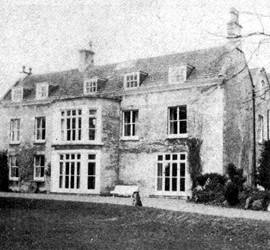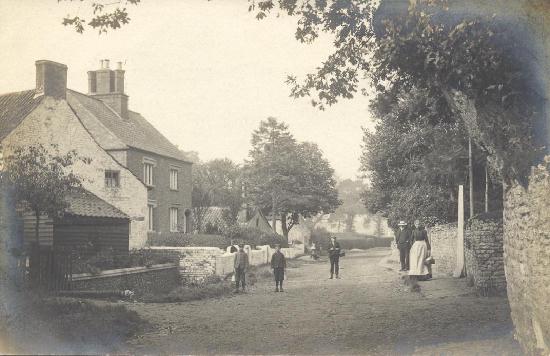|
Cawthorpe The tiny village
of Cawthorpe is barely more than a dozen houses and the road through it leads nowhere but peters out into a cart track to surrounding farmland and then becomes a footpath into Bourne Wood and the countryside beyond.
The house was built of locally quarried Barnack rag in 1819 and stands in two acres of lawns and gardens surrounded by mature trees including acacia, limes, walnuts, cedars, ilex, willow and Scots pine. The house itself has rooms and windows of classic proportions with high ceilings and a gracious sense of space. It was once the home of Robert Gardner, the Bourne bank manager turned artist, who lived here until he died in 1926 and he added a large studio with great atelier-style windows to catch the light for his painting. Cawthorpe Hall has been the home for the past 40 years of retired civil engineer Osric Armstrong and his wife Chantal and although they have spent much time abroad, in Africa, the Middle East and the Caribbean, they have devoted a great deal of time furnishing the house with an accumulation of much-loved things, including several paintings by Robert Gardner. In 1989, with an eye on retirement, Osric also planted three acres of roses for the production of rose oil and rose water that has now become a business, selling his products to manufacturers, aroma-therapists and the public. The couple have also run a bed and breakfast business from the hall for the past eight years and the beautiful gardens are frequently the setting for charity events. There is another imposing property in the village called Cawthorpe House, stone built and dating back to the late 18th century, and now used as a centre for management training. The 20-bedroom house had been used as a family home since Georgian times and the division in the property between masters and servants can clearly be seen in the design of the property. A natural spring in the grounds provided water not only for the house but at one time for the entire village and there is also a large Wellingtonia tree growing nearby. The foundations of the house date back to the Tudor period when the property was merely a cottage and a date engraved on one of the outhouses puts the construction at 1723 while a date over the door of the main house is 1804 and accompanied by the initials JH. The stone used in construction was hand-cut and came from a local quarry, either Ketton or Casterton, while the roof is of Collyweston slate. In recent years, two secret rooms were discovered in that part of the house which was once used as the servants' quarters and can only be entered from below through trapdoors. A water tank was also found under the kitchen floor, about one and a half metres deep, filled by rain water piped in from the roof to give the house an additional supply of fresh water. Victorian gas lamp fittings also survive in some of the rooms although Cawthorpe never had a public gas supply and it is presumed that the lamps ran on methane produced in the stables. This theory is borne out by a plaque that can be found in one of the outbuildings, now used as a conference room, which says: "No lights or smoking allowed in or near this gas house. Highly dangerous to infringe these regulations." Other Victorian features included in the house are a cast iron balustrade in a fleur de lys design and a number of fireplaces while there are several interesting structural features including fine Georgian cross slats on the windows and expertly crafted and moulded shutters which close across the massive bay windows. It is also believed that several rooms at the house were once used as a sheriff's office and included a cell for prisoners which led on to a walled exercise yard. This is one of the most interesting houses in the Bourne area and has yet to reveal all of its secrets.
The village is mentioned in the Domesday Book in which it is referred to as Caletorp but there are subsequent spellings of
Calthorp and Calethorp and all originate from the Scandinavian meaning Kali's secondary settlement. One thousand years ago, this was a place of dwellings occupied
by peasants and surrounded by open fields. The coming of the Normans to England involved the transfer of much land from the previous owners, most of them compatriots of William the Conqueror, and so the new landlord at Cawthorpe, and for much of Bourne, became Oger the Breton who had nineteen entries to his name in the great land survey of 1086 while his holdings at Cawthorpe extended to around 400 acres, known by such names as Cawthorpe West Field, Haseland Field and Quinto Field.
There was also a spa here during the early years of the 18th century and a
public notice in the Stamford Mercury on Thursday 29th May 1718
announced: "This is to give notice to all gentlemen, ladies and
others, that have occasion to drink spa water, that there is a new and
approved excellent strong spa lately found out and handsomely fitted up at Cawthorpe, a little mile from Bourne in Lincolnshire, where there is
convenient entertainment for all such as in the season desire to drink
thereof."
REVISED JUNE 2012 See also R A Gardner John Lely Ostler Charles Everard Gypsies Cawthorpe roses - the sweet smell of petal power
Go to: Main Index Villages Index |
|||||||||||


